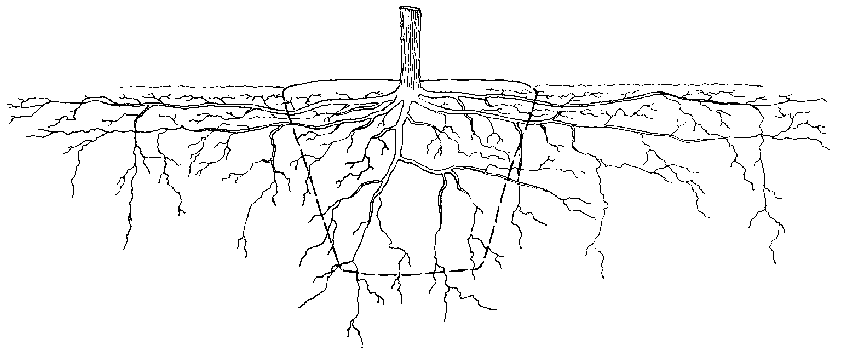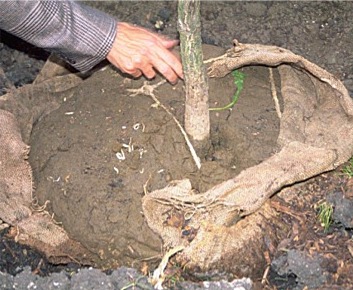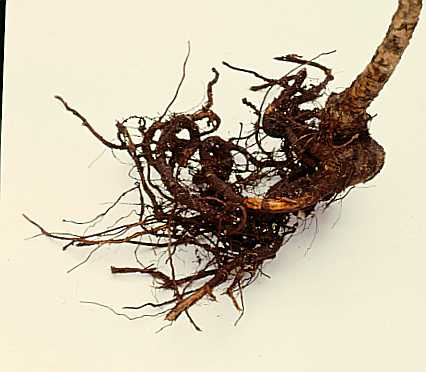Field Grown Tree Root Structures
Field-grown trees develop typical tree root structures, roots extend far beyond the tree's top growth in all directions.
Harvesting reduces these root structures substantially, and the tree must recover from the harvesting process after it is planted in the landscape.
Some field grown trees do not show visible trunk flare, usually because they were planted too deep in the nursery or extra dirt was accidentally added on top of the root ball during production. This condition can lead to trunk rot or deformed root formation in the landscape.

Field Harvesting
|
|

No Visible Trunk Flare When the tree does not show good trunk flare, the tree may have excess dirt on top of the root ball. This means that there are less roots in root ball and that some are, or may become, deformed. Note the dark area on the trunk indicating the amount of the damp extra soil removed, and not one root has been exposed.
|

Root ball did not hold together in handling prior to planting. The root structure was inadequate to hold the ball together. |

Good root structure. |

Poor root structure. |

20 identical looking field-grown trees planted at the same
time.
|
|
